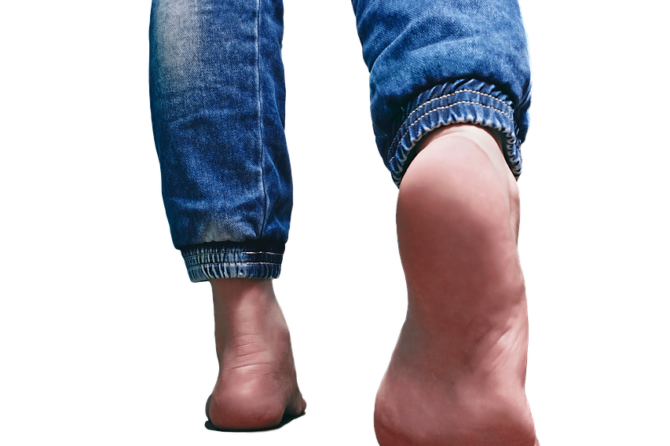
Another Cause of Heel Pain
Heel pain has many causes, but the results are always the same – pain. If you’re living with heel pain not brought on by an injury, you need to see a podiatrist for an accurate diagnosis. Pump bump (Haglund’s deformity), bursitis, heel spurs, and tendonitis are all common causes of heel pain and can lead to Insertional Achilles Tendonitis.
A tendon is a strong band of tissue connecting a muscle to a bone. There are over 1,320 tendons in the human body. The Achilles tendon connects the calf muscle to the heel bone (calcaneus) and helps lift the heel off the ground when walking. Achilles tendons are prone to both overuse injuries, such as tendonitis, and sudden injuries, such as a tendon rupture.
Insertional Achilles Tendonitis is a condition in which the end of the Achilles attached to the calcaneus begins to deteriorate. Onset is slow, with pain occurring at first during activity and then progressing in severity until you are forced to discontinue activity. Swelling and redness will be present, and it may be difficult to stretch the back of your ankle.
Your podiatrist will begin with a physical examination of your heel and ask you about your activity level and the type of pain you are experiencing. Although deterioration will not show on an X-ray, your doctor may take them to check for fractures and bone spurs. MRIs are the ideal choice for imaging the tendon to see the exact severity and location of the deterioration.
Conservative treatments for Insertional Achilles Tendonitis include RICE (rest, ice, compression, elevation), stretching, use of orthotics, and physical therapy to strengthen the foot and ankle. Laser treatments can assist in pain management and promote faster healing times. Lasers have documented success in reducing bone spurs and preventing further degeneration of tendons.
For severe pain and deterioration, a surgical solution may be necessary. During the surgical procedure, the tendon is detached from the heel, bone spurs are removed, the tendon is prepped, and the Achilles is reattached using the Arthrex SpeedBridge repair system. We use this innovative 4-anchor bridge because it allows for additional compression and stability which will increase your range of motion and speed healing.
If you are experiencing heel pain without an obvious injury, you need to see a podiatrist. Don’t wait until heel pain takes you out of the game and keeps you from the activities you love. Call the FAAWC today.
